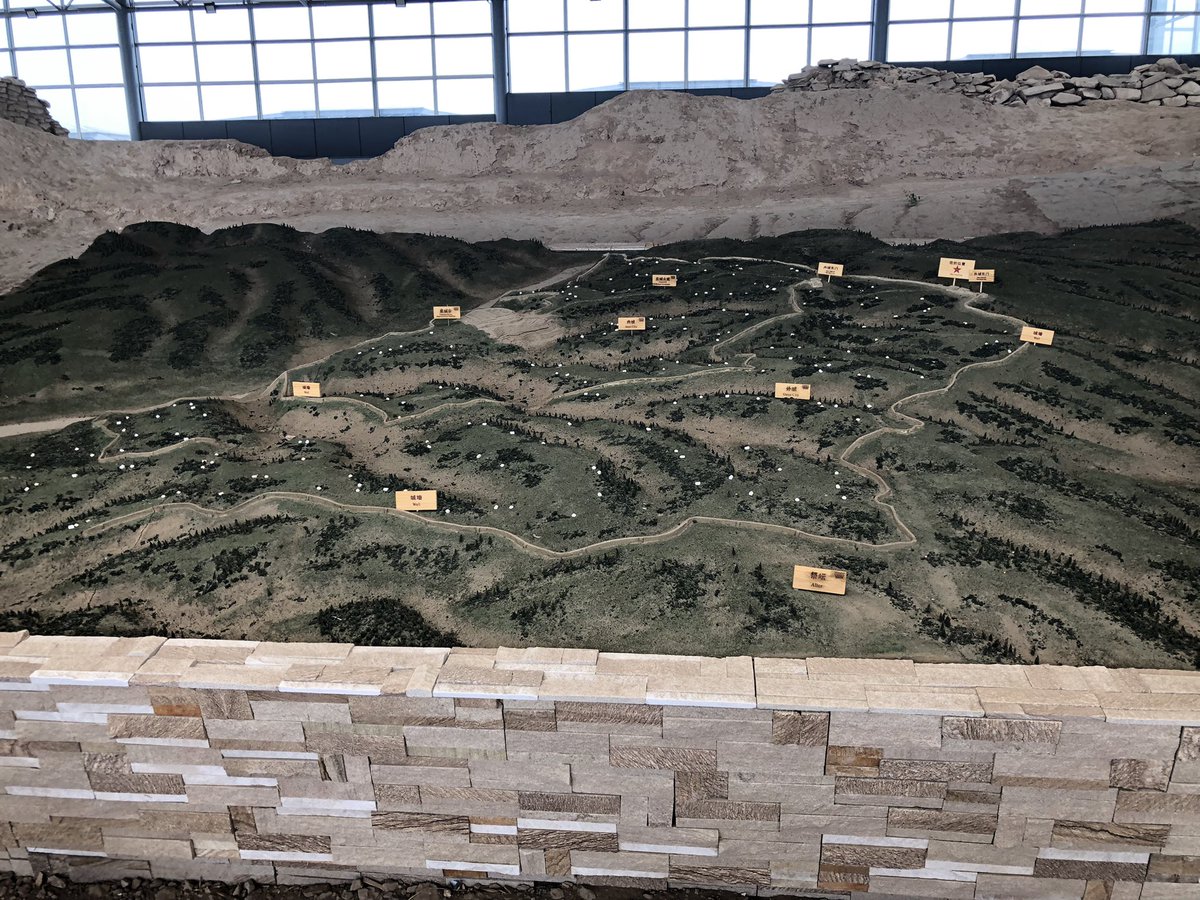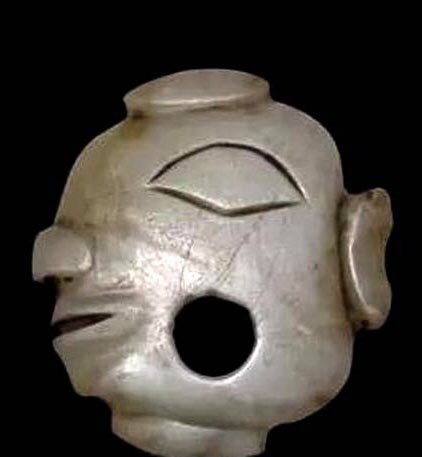This weekend, @NishiDholakia @AntiokhosE and I explored the largest & most confounding #Neolithic site in China: #Shimao. A massive fortified stone city in an unexpected place, w/ objects from far afield, and grizzly human sacrifices. Vibrant until abandoned around 1800BCE 1/ 

This first mystery of #Shimao was the location: the city was built on the Northern Loess Plateau, relatively dry and far from the lush Yellow River “cradle of Chinese civilisation”. What might attract a large #Neolithic population to create a major city in such a place? 2/ 

The second mystery was the building material. #Archaeologists associated this period in #China with rammed earth structures. But this #Neolithic city - built in 2300 BCE - was made of #stone, dominated by a 20 tiered oblong stepped #pyramid structure on the highest hill 3/ 

And this was a city built to endure serious attack - with miles of inner and outer perimeter walls, & defences including barbicans, baffle gates, bastions and an angled “horse-face” structure designed to draw attackers into an area where defenders could attack from three sides 4/ 







And it seemed to be a wealthy trading city, with many objects that couldn’t be found locally - like jade objects - some embedded in the city walls, the earliest examples of bone “mouth reed” musical instruments, ceramic birds (photos: viewofchina.com) 5/ 







There was also grizzly evidence of human sacrifice, the earliest known in China’s history. So far 6 pits have been found, including one on each side of the East gate (the main entrance), all containing the decapitated heads of young women. 6/ 



The stone carvings found in the walls at the site are also quite extraordinary (although not visible at the site right now)- to my mind, most similar to the style found at #Sanxingdui in #Sichuan from about 1000 years later (photos: viewofchina.com) 7/ 







So are there answers to the various mysteries? Well some 4300 years ago, the weather was much warmer and wetter - ideal for habitation. But between 2000-1700 BCE a rapid shift to a drier/cooler climate would have made Shimao a very much less attractive proposition 8/ 







So it is reasonably clear why #Shimao was abandoned. But so much still to discover. Who lived here? Who were their enemies, against whom so much fortification was needed? Why were only young women sacrificed? The dig continues and I very much look forward to hearing more 9/9 

• • •
Missing some Tweet in this thread? You can try to
force a refresh




























